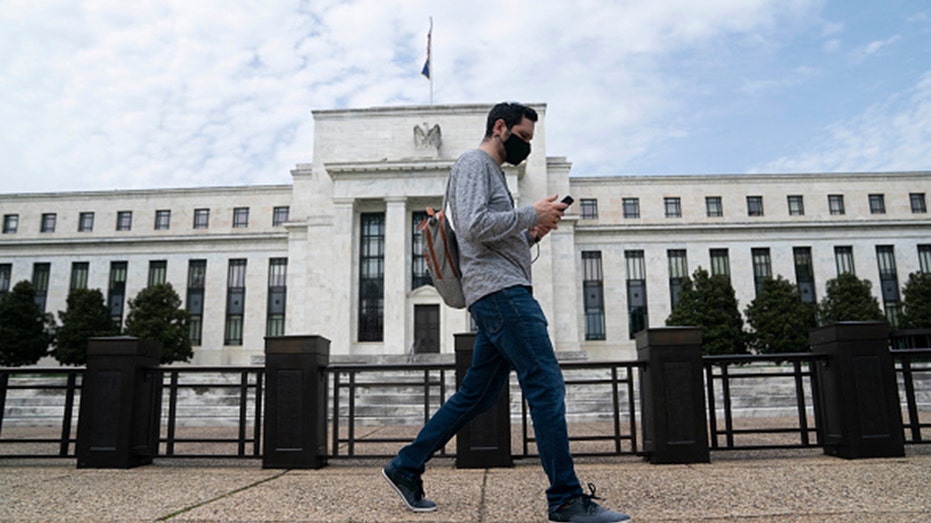Key Fed inflation gauge jumps 5.4% in February, biggest gain since 1983
High consumer demand, worker shortage, supply chain disruptions have fueled price spikes
Former Obama economic advisor blames inflation spike on supply chain bottlenecks
Austan Goolsbee discusses the cause of surging inflation in the U.S., supply chain issues putting a strain on the economy and GDP growth.
A key measure of annual inflation that is closely watched by the Federal Reserve is running at the hottest pace in nearly four decades as widespread supply disruptions, extraordinarily high consumer demand and worker shortages fuel rapidly rising prices.
Core prices, which exclude the more volatile measurements of food and energy, soared by 5.4% in the year through February, according to the personal consumption expenditures price index data released Friday morning. That measurement is the Fed's preferred gauge to track inflation; it marks the 11th consecutive month the measure has been above the central bank's target range of 2%.
INFLATION TOPS AMERICANS' BIGGEST ECONOMIC CONCERNS, GALLUP SURVEY SHOWS
Including food and energy, the inflation gauge jumped 6.4% in February from the previous year, the strongest gain since February 1982.
In the one-month period between January and February, core prices soared 0.4%, while the headline gain shot up by 0.6%.

A clerk bags dried peppers for a customer inside Grand Central Market on March 11, 2022, in downtown Los Angeles, California. (Patrick T. Fallon/AFP via / Getty Images)
The inflation spike largely reflected surging energy costs, which rose 25.7% from a year ago, and food costs, which were up 8% over that same time period.
The PCE report was accompanied by data on household spending, which showed that consumer spending slowed markedly in February, rising by just 0.2% – down from an upwardly revised 2.7% rate in January.
The data is further evidence of a spike in prices illustrated by a separate measure – the Consumer Price Index – which showed inflation rose by 7.9% in February from the previous year, a fresh 40-year high.
Raging inflation has inflicted financial pain on millions of U.S. households, particularly low-income families, eroding wage gains and setting up a massive political challenge for President Biden, who has seen his approval rating sink in conjunction with the rising prices. It has also forced the Federal Reserve to concede that surging prices are not transitory and to take steps to dramatically normalize policy.

A man wearing a mask walks past the U.S. Federal Reserve building in Washington, D.C., on April 29, 2020. (Xinhua/Liu Jie via / Getty Images)
Fed policymakers voted earlier this month to raise the benchmark federal funds rate by 25 basis points and projected at least six more, similarly sized increases over the next year.
But officials have since taken a more hawkish stance, with some openly signaling support for a faster, half-percentage point increase at their May meeting.
GET FOX BUSINESS ON THE GO BY CLICKING HERE
"If we conclude that it is appropriate to move more aggressively by raising the federal funds rate by more than 25 basis points at a meeting or meetings, we will do so," Chairman Jerome Powell said last week during an economics conference. "And if we determine that we need to tighten beyond common measures of neutral and into a more restrictive stance, we will do that as well."
